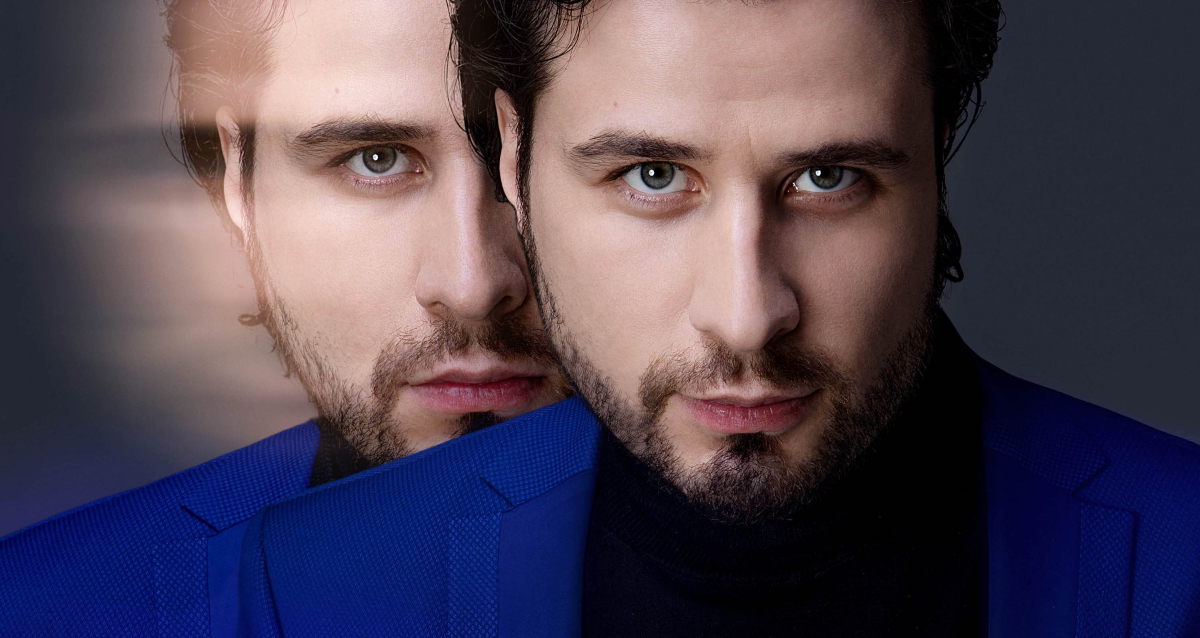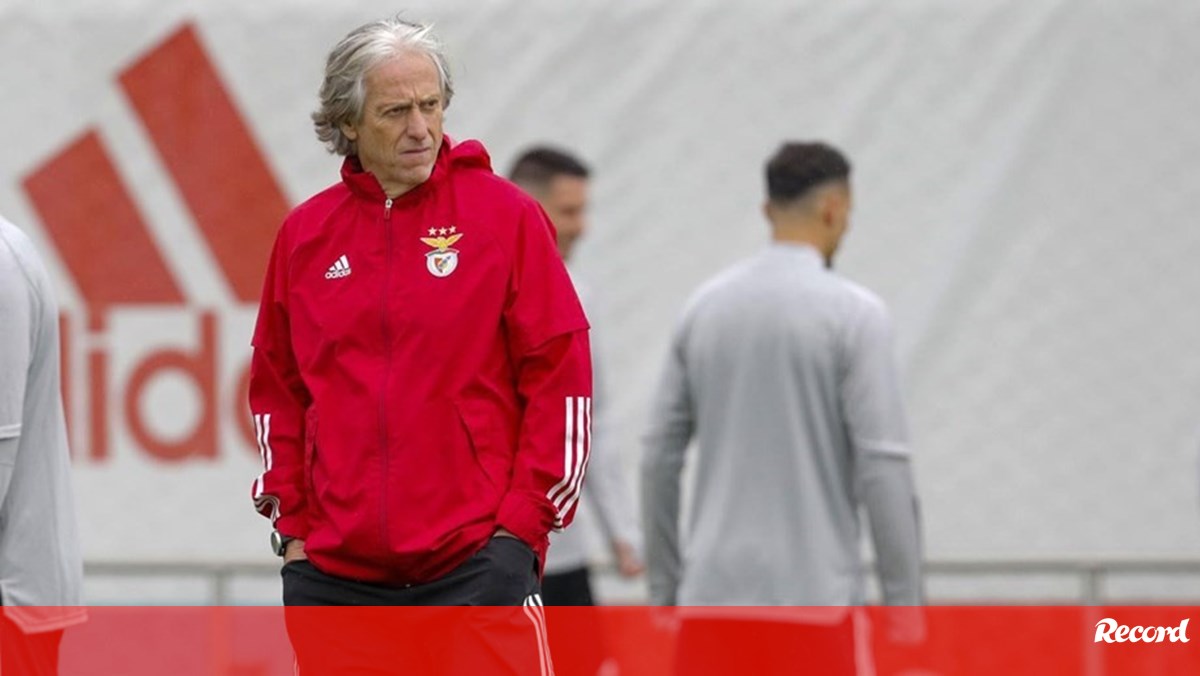“To connect these two composers, to form a conversation between them – this was the main task for me,” revealed pianist Andrejs Osokins, telling about his new album “Two Worlds” on Latvian Radio 3’s “Klasika” program “PārMijas”, which has been released by Prima Classic and is available in both tangible format and music streaming platforms. The pianist will focus on Claude Debussy’s piano music, emphasizing Debussy’s unusual approach to piano playing and the composer’s desire to get closer to jazz, contrasting George Gershwin’s piano miniatures and arrangements, highlighting Gershwin’s desire to prove himself as an academic composer.
Inga Žilinska: Prima Classic Publishing House is a company created by singer Marina Rebeka and her wife Edgardo Vertanessian. How did this collaboration develop?
Andrejs Osokins: We had a very good cooperation. Marina and I played a very beautiful concert dedicated to Rachmaninov’s music in Dzintari Concert Hall in May. I was very, very excited that next to this wonderful and ambitious career of opera singing, she was also developing her own sound publishing house. She founded it, of course, to record her wonderful voice, but also to give the opportunity to sound as good as possible to other artists, her friends, colleagues. Edgardo is a fantastic sound director with a great deal of experience in both academic and non-academic music. He recently told me that he even had the experience of working with Luciano Pavarotti once – it’s hard to imagine anything like that. And he offered me to create a solo disc; he wanted the music not to be from my repertoire, not to be what I played in concerts, but to be new music, a new world for me. And then we thought of two composers, Gershwin and Debussy. I wanted to have a conversation between them.
In essence, both of these composers are very great innovators, especially Debussy, who is the first impressionist;
like Claude Monet in painting, Debussy is considered to be the first true representative of Impressionism, who wrote music and also wrote for piano.
He has a very peculiar piano thinking: very gentle, with many nuances, with a very gentle touch, with irony, humor, subtlety, not so saturated with philosophy, but more with dance rhythms, dance feelings. And so very light in general – music for pleasure, but also for intellectual pleasure, and his music was revealed to me from some very, very bright point.
But what could contrast him? This “old Europe”, where Debussy and the “new world” worked, as America was called at the time – I thought it could be Gershwin. He may not be as well known as a piano composer, but he has preludes; it turns out – seven, not three, which everyone knows.
Gershwin’s music, of course, is also something new, very influenced by jazz, a lot of syncopated rhythms, a lot of energy, a very beautiful melody, such painful harmonies.
And all this together also forms a new step in piano playing.
To connect these two composers, to form a conversation between them – that was my main task, and I think I did very well. Of course, Edgardo helped me a lot, we wrote in the Latvian Radio 1st studio, he brought a lot of his microphones to choose the color I want afterwards, and in the end we found that the music of Debussy and Gershwin had a slightly different sound processing. . But he was very excited about you [Latvijas Radio 1. studijas] technique. It was a great pleasure to work with her, and in the end Marina Rebecca gave the title “Two Worlds”, she said: if we have Europe and America, two composers, two faces, let’s have “Two Worlds”.
We started thinking about the disc at the beginning of last year, even before the pandemic, and we do it just when the pandemic started – we realized that we need to do it before we have a chance to perform, we recorded in the spring and made an assembly in the fall. It is interesting that now also its life is divided into two worlds: what was before – 2019 – and what is starting with this pandemic. For each of us, life has changed – for some more, for less, for the negative, for some, perhaps for the positive. And also the world we live in at home, when we can’t meet people in particular – this is our world, our inner world. And there is a world that is in the news, every day those numbers – it’s some other, crazy world. I don’t think it’s going to be such a topical name, but
in my opinion, a great many things are now divided in two, including when it comes to vaccines. Interestingly, art gives us some symbols, which are then in many places in our lives.
I very much hope that at a time when we do not have the opportunity to perform and play music in person, high-quality recorded music and a well-thought-out program will delight listeners, and at some point they may be able to imagine that they are in a two-composer concert – and this music is so wonderful and unique!
How do these authors interact? Have you merged them?
For example, I started with a piece by Debussy – the last piece from the cycle “Children’s Corner”, and everyone thinks it’s probably Gershwin, but it’s Debussy’s music. And there are some Gershwin’s preludes with such impressionistic colors that perhaps it could be written in Debussy as well. But, in my opinion, also at a deeper level:
In his debut, he tried to make academic music very easy, very enjoyable all his life, without such a great philosophy and pain typical of the German tradition.
It wasn’t the main thing for him, he wrote that its music could be heard in a cafe and he would be very happy about it. I don’t think, for example, Brahms would be happy if his “German Requiem” sounded in a cafe.
But Gershwin, it seems to me, quite the opposite: from the beginning he belonged to such a generation of jazz, the society of jazz composers, and he always wanted to become an academic composer.
He wanted a symphony orchestra in his compositions; for example, he first wrote Rhapsody in Blues, for jazz band and piano, and then he wanted to create an instrumentation for an orchestra and a piano — a piano concerto in essence. And then he also wrote a piano concert. It was very important for him to be appreciated in this great tradition, which began with Baha or Monteverdi, so that he was not just a songwriter on a Broadway show – which basically brought him a lot of profit, but maybe not so much satisfaction. And in his short life, I think he has achieved it. I was interested in one trying to be very enjoyable, but the other trying to be more serious, this is the main topic. So there are three Debussy compositions that are so easy and then three Gershwin songs, also, of course, very beautiful music, but with a deep emotional subtext.
I have already released five singles; we figured it out – while the disc is still loading there on all platforms, we can skip singles. Some of them were very highly valued, they appeared in all “playlists” as news of classical music.
What compositions are included in the album?
There are 24 compositions, it happened by accident, I realized that there will be over 20, and then I thought – 24 is like 24 chanters for Chopin, 24 preludes for Debussy, and 24 tonalities in general. It turns out that these are 24 stories, 24 ideas, views of their era – the 20th century. the beginning of their lives. There are also very different compositions by nature: both Debussy’s “Estampi” and “Island of Joy”, which is a very virtuoso composition, and, for example, the prelude “Girl with Linen Hair”, which is played in schools and which is not so complicated, but is a very poetic work, the prelude “What was seen by the west wind”. And there are also songs from Gershwin, which he later used in the collection “Songbook”, but the first version was just that – for piano.
And a very interesting fact (and here’s a big thank you to Professor Ventis Zilbert for once advising me to look at the library) is that Gershwin has a total of seven preludes, not three that everyone plays and knows. He wanted to write more, but only three published – either those were the possibilities, or perhaps he thought they were the most serious. I will say that the three works that we know are more serious in scope, bigger. But there are seven preludes in total, I recorded all seven, and I find that terribly interesting. I also place them chronologically, after years – then it becomes interesting to listen, a completely different cycle, more diverse. Not just fast, slow, fast, but there’s something like minuet and very slow music, almost like an opera scene or an introduction before a beautiful aria. And, of course, such famous songs as “I Got Rhythm” and “The Man I Love”. And two of my transcriptions, arrangements. One is “Rhapsody in the style of the blues”, because we didn’t have a pandemic, an orchestra, and that’s why I created such a fantasy for a few minutes on all the topics that sound there. And also another fantasy for one left hand song “The Man I Love”, there I also add quotes from Debussy’s music.
It turns out that these two composers have not met in real life, but on this disc, within the framework of this one piece, they are talking to each other.
It starts with “Moonlight”, ends with one left hand and in the middle is Gershwin’s song “The Man I Love” and Debussy’s “Arabesque”. Maybe somewhere there they can talk and talk like that. Gershwin has always been very interested in all the French subtlety, and Debussy has taken a lot out of jazz. But this is the last piece of music, as such a culmination of content for the whole disc. These 24 works can be listened to as a whole, as a cycle, and you can choose your favorite piece or your favorite author and listen to it only.
Who is your favorite piece? Is that so?
Of course not. Basically, it’s all like one piece. I am now making a program with Scriabin’s music, and it is interesting how for this composer all his opuses form as if one super-opus, basically from the first to the last piece, as if he had created a huge symphony or mystery. It seems to me that such large cycles can also exist, they are not as strict as, for example, in the form of a sonata or a symphony cycle, where each part has its own tempo and has such an interaction, but it may be like a dance suite – some kind of organization there exists. They are like parts of a bridge – we must not remove anyone, because then the whole bridge will not be so strong. It was important for me to give something about myself and understand something about this composer in each piece.
Will Debussy and Gershwin remain in your repertoire?
I very much hope that they will stay – if we have the opportunity this summer to perform in person with listeners, in masks or with restrictions, but still in person, with energy.
Both Debussy’s and especially Gershwin’s music require the exchange of their energy so that it is direct so that one can enjoy it. And that’s why I really want the concerts to be just that – because I already have a record.
In concerts then, of course, it may sound with other authors in other combinations, but definitely, I will definitely play it, because the music is very beautiful.
–


